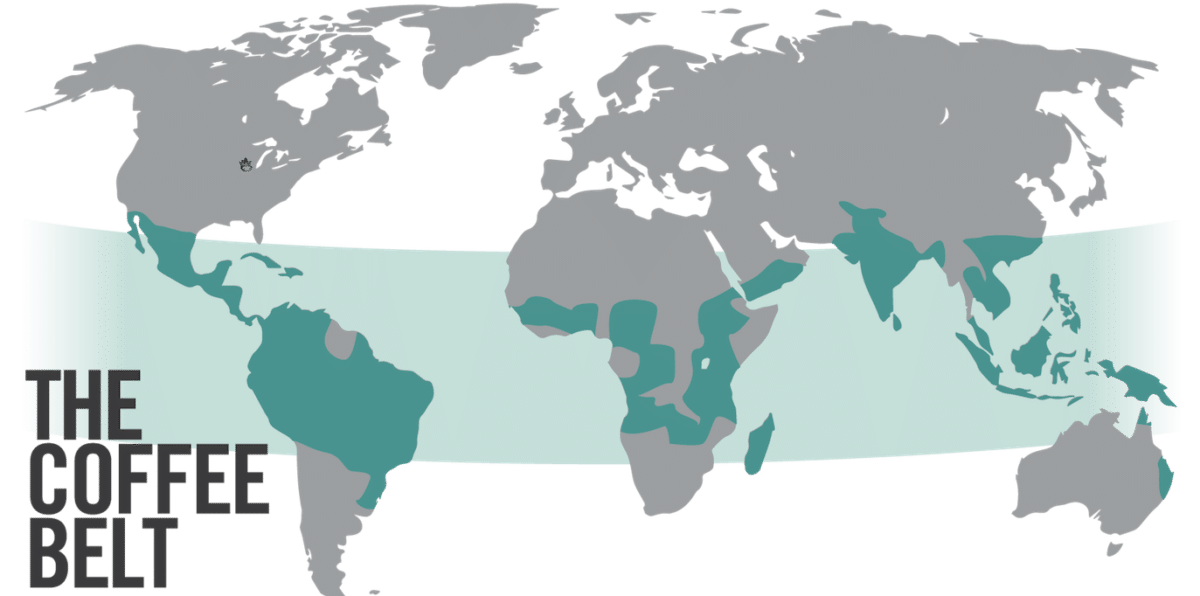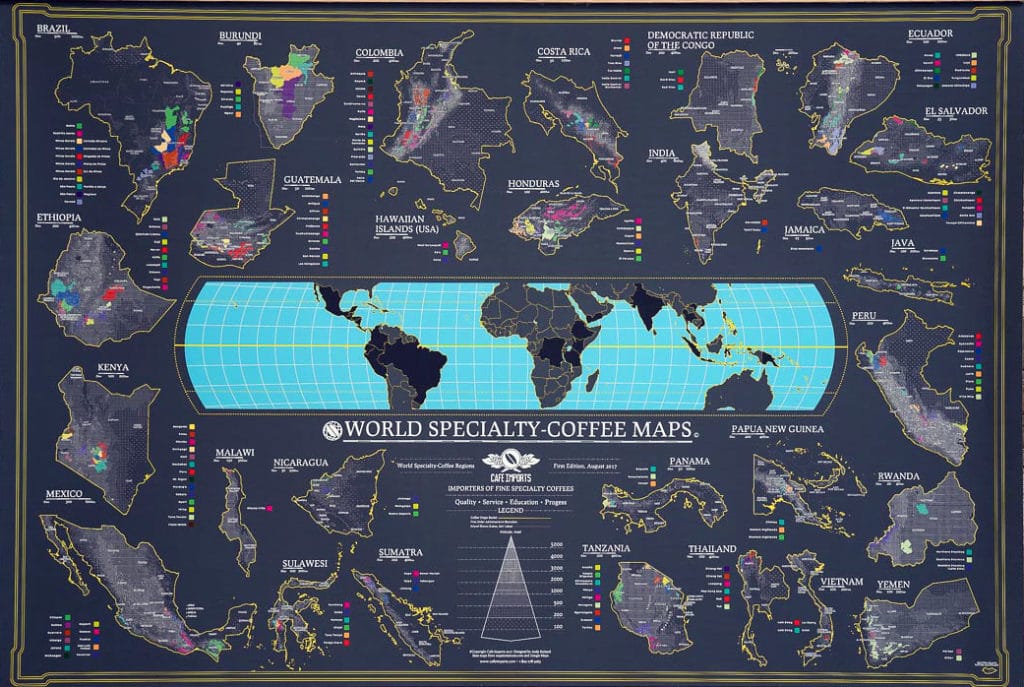
Coffee Regions
Coffee beans are a particularly tricky crop to grow and harvest. Their need for such precise weather and soil conditions mean they can only grow at large scale in a few places throughout the world. With the plant being so particular, and having originated in Ethiopia just north of the Equator, it only truly flourishes in similar regions around the world. In fact, almost all of the world’s coffee is produced in a narrow region from 25ºN to 30ºS, often referred to as the Coffee Belt. Within the belt the climate and production differences from region to region can lead to a wide range of final products. This variety is what makes enjoying coffee from throughout the world a never ending adventure and one we’re glad to be a part of at Cafe Altura.

While no region adheres entirely to one strict set of practices, or produces coffee with the same flavor profile entirely, there all some overarching trends found in each area. With all of the nuances in the flavors and techniques coming from each region it can be hardto keep track, here’s a quick overview to get you acquainted with the basics:
Central America
Central American coffee is typically washed and rust-resistant with some heirloom-variants included. That might be a lot to take it so let’s break it down as it’ll be helpful for understanding the traits found in other regions as well. Washed coffee, also referred to as the wet process, unsurprisingly uses a lot of water. After the beans are “pulped”, or removed from the fruit, they’re floated in water for 24 to 48 hours–sometimes longer. This process removes the mucilage left behind by the fruit from the bean, initiates fermentation and starts to release the bean’s natural aroma. It’s a method that requires more time and skill than others but also produces some of the most sought after coffee you can find. The coffee produced with the washing method also leads to a final cup with a brighter, cleaner and more acidic flavor.
South America
South America, especially Columbia and Brazil, produces some of the morecommon types that you’ll find in America. Higher-end coffees from South America will be less acidic, a noticeable taste of caramel-like sweetness and a medium body. Coffees from this region will also commonly have a nutty undertone. Most growers in thearea produce washed or semi-washed beans. Semi-washed coffee processing is sometimes called the ‘wet-hulled’ process. The method involves removing the bean from the outer skin, soaking in water, but leaving the mucilage on the parchment of the fruit for atwo stage sun drying process. The process leads to a uniquely dark green colored bean with a more full body than a washed coffee and bit more of an intense flavor as well.
East Africa
With Ethiopia being noted as the birthplace of all coffee, this is an iconic region with deep roots in the history of both the drink and the agriculture behind it. With a range of climates and socioeconomic factors impacting the variety coming out of the coffee producing nations of East Africa it can be hard to pin down a specific set of tasting and production notes for the region. That being said, typically coffee in East Africa is being produced on smaller family farms and sold in co-ops. The coffee from here will be some of the most acidic anywhere in the world. Since these more acidic beans can be a bit of an acquired taste, East African beans are often used in multi-region blends to provide a unique bite without overwhelming the pallette.Washing techniques will vary from country to country. In places like Kenya, the coffee is almost thoroughly washed whereas Ethiopian coffee is usually unwashed. These unwashed coffees will end up being a little sweeter than their washed ones due to the sugars from the original fruit having not been stripped from the bean. Another particular to the region is that some smaller farmers in Tanzania and elsewhere will wash their own beans. Since they aren’t usually using the most advanced equipment or techniques, this process can lead to an extremely unique final product where no batch is quite like another.
Southeast Asia
Coffee is a massive part of the economy in southeast Asia. In fact, Indonesia produces more than one third of all the world’s coffee and coffee beans are Vietnam’s second largest export (behind only rice). While these twocountries represent the bulk of coffee production other areas including Papua New Guinea and India have distinctive coffee cultures all their own. Across the region beans are usually processed with the wet hulling method. In Indonesia, this occurs througha process called gilling bash where farmers take off the outer skin and let the beans sit in their mucilage for 24 hours before washing. At the end of this process the beans are dried to a third of their original moisture before being hulled and further processed.
The variety of coffee most commonly grown in southeast Asia is a Catimore Hybrid. The small Catimore trees produce high yields and a tasty product when planted at moderate elevation. They are prized for how densely they can be planted and their resistance to disease such as coffee rust. The overall flavor profile resulting from the processes and plant types unique to Southeast Asia is one that is usually associated with the characteristics of Sumatra coffee. That is, marked by a coffee that is less bright and acidic and rather more smooth and earthy in flavor. These coffees will sometimes taste a little more herbaceous and are among the more fuller-bodied options.

